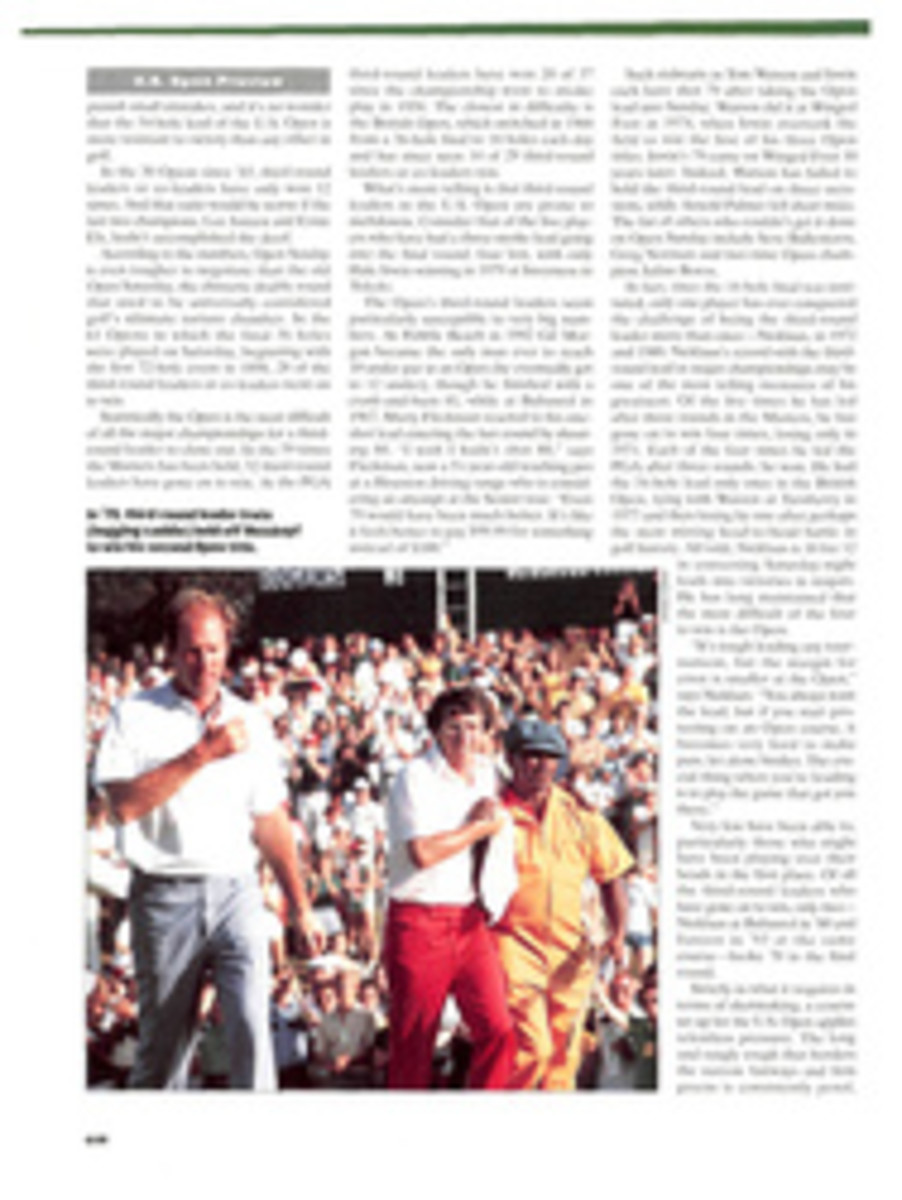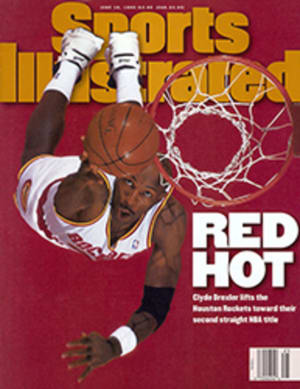
TRACKING TIGER
It was to have been a beautiful relationship, the marriage of
student and athlete in the person of Tiger Woods. He arrived at
Stanford last September, a newly crowned U.S. Amateur champion
emphatically expressing his determination to stay in school long
enough to earn a degree before seeking to mine the golf world
for a lion's share (or a Tiger's share) of the available gold.
Now that school is out for the summer, Woods arrives this week
at the first stop on his vacation itinerary -- Shinnecock Hills,
for the U.S. Open -- amid talk that he has become disenchanted
with his student-athlete status.
Trouble surfaced in April, soon after the Masters, when Stanford
suspended Woods from the golf team for a day for writing Masters
diaries for Golf World and Golfweek magazines. ``It's deemed to
be a promotion of a commercial publication,'' says Steve
Mallonee, director of legislative services for the NCAA. ``What
Stanford did was in accordance with the rules. It had to declare
the individual ineligible. Because of the inadvertence of the
violation, there was no penalty and his eligibility was
restored.''
Stanford, according to Tiger's father, Earl, also asked that
Woods explain the source of the new irons he used for the final
round of the Masters (they belonged to his instructor, Butch
Harmon) and why he used Maxfli golf balls rather than the
Titleists provided to him by the university (Greg Norman
suggested he try them). Again, Stanford was acting on its
responsibility to ensure that one of its athletes was not
receiving free equipment from a manufacturer.
Woods privately seethed about the inquiries. Meanwhile, his
father intimated that Tiger might leave school early if such
annoying NCAA scrutiny continued or if, said Earl, ``he achieves
a level of performance in which collegiate golf is no longer a
viable environment for him.''
Certainly other environments beckon. This summer Woods, 19, will
compete in the U.S. Open, the Western Open, the Scottish Open
and the British Open. Favorable reviews on the international
stage will raise the stakes awaiting him when he renounces his
amateur standing. At the moment, according to one major
management firm, Woods could immediately command endorsement
deals totaling more than $10 million.
In large part Woods's biggest dilemma is trying to be a serious
student while dealing with the enormous time demands of college
golf. Big Division I programs play a 10-month season that begins
in September. Indeed, a study commissioned by the NCAA five
years ago determined that college golfers miss more class time
than football or basketball players.
Woods makes no secret of his frustration with the time
constraints that left him dissatisfied with both his grades and
his golf, a B average and first-team All-America honors failing
to pacify the perfectionist in him.
Nearly 35 years ago Jack Nicklaus, similarly intent on getting
his degree (from Ohio State), quit school three semesters short
of graduation and turned pro. Nicklaus is the first to say that
the opportunities and pressures facing Woods are far greater
than those that he had to deal with. He believes the temptation
to leave school early will be powerful.
``Tiger has all the right tools to be a successful and dominant
golfer,'' Nicklaus said at the recent Memorial Tournament. ``He
has a college career he wants to finish, but at the same time
he'll be receiving invitations to pro events all over the place.
It's up to him to determine how much he wants to focus on golf
and what his goals are.''
-- JOHN STREGE
B/W PHOTO:JOHN G. ZIMMERMAN Will Tiger finish what the Bear didn't? [Young Jack Nicklaus]COLOR PHOTO:BOB MARTIN [Tiger Woods]

